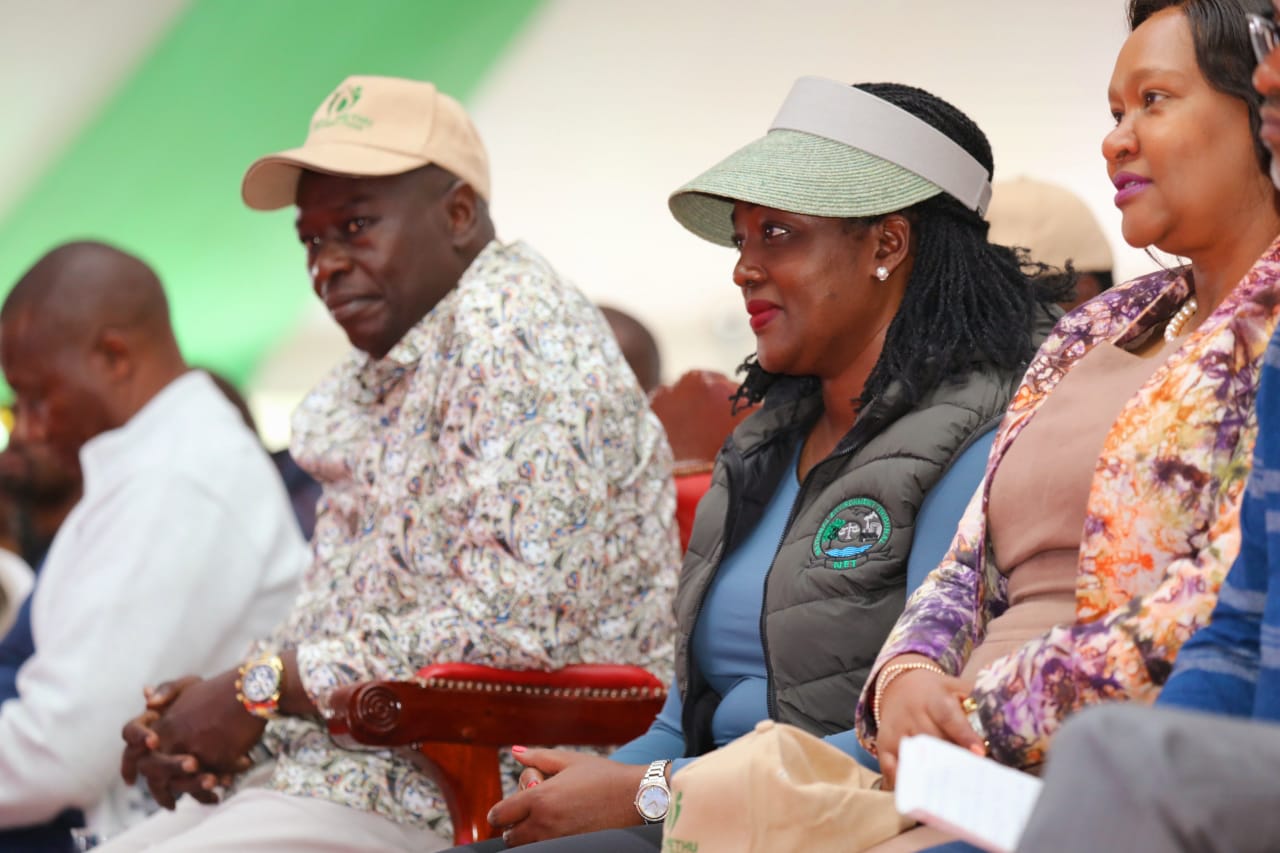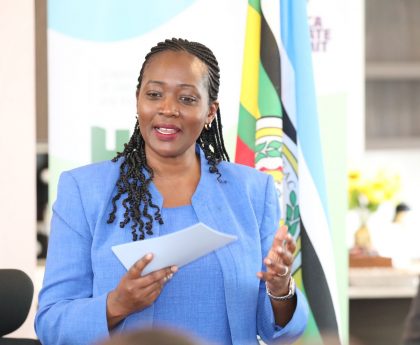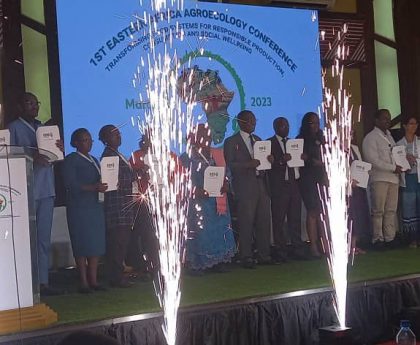By Chemtai Kirui
The Kenyan government has pledged to restore the degraded ecosystem of Lake Olbolosat, the only natural lake in Mt. Kenya that serves as a critical source of water and livelihood for human and wildlife along the Ewaso Nyiro River basin, which traverses Laikipia, Samburu, Isiolo, and Garissa counties.
The Cabinet Secretary for Environment, Climate Change, and Forestry, Soipan Tuya, made the announcement during a tree planting exercise organized by the area Senator John Muhia Methu, Saturday, at Olbolosat in Shamata.
“This lake forms the headwaters for the Ewaso Nyiro River, which supports the livelihoods of communities, livestock and wildlife in the dry Laikipia, Samburu, Isiolo and Garissa Counties and that is to show us the need for us to conserve this lake,” the CS said.
The lake was gazetted as a Wetland Protected Area in 2015 and re-gazetted in 2019 as a fully protected Wetland. However, the lake’s beauty has been greatly destroyed by illegal herders drawn from neighboring counties of Isiolo, Laikipia, Samburu, and Baringo. The dwindling water volumes of Lake Ol’ Bolossat threaten the survival of the hundreds of hippos and over 300 bird species that depend on it, including the endangered grey crowned cranes.
The restoration of Lake Olbolosat, the only lake in Central Kenya, is of significant importance as it serves as a crucial source of water and livelihood for human and wildlife along the Ewaso Nyiro River basin that traverses Laikipia, Samburu, Isiolo, and Garissa Counties. Unfortunately, the recent prolonged drought attributed to climate change has resulted in the retreating of the water body, endangering the lives of communities, livestock, and wildlife that depend on it.
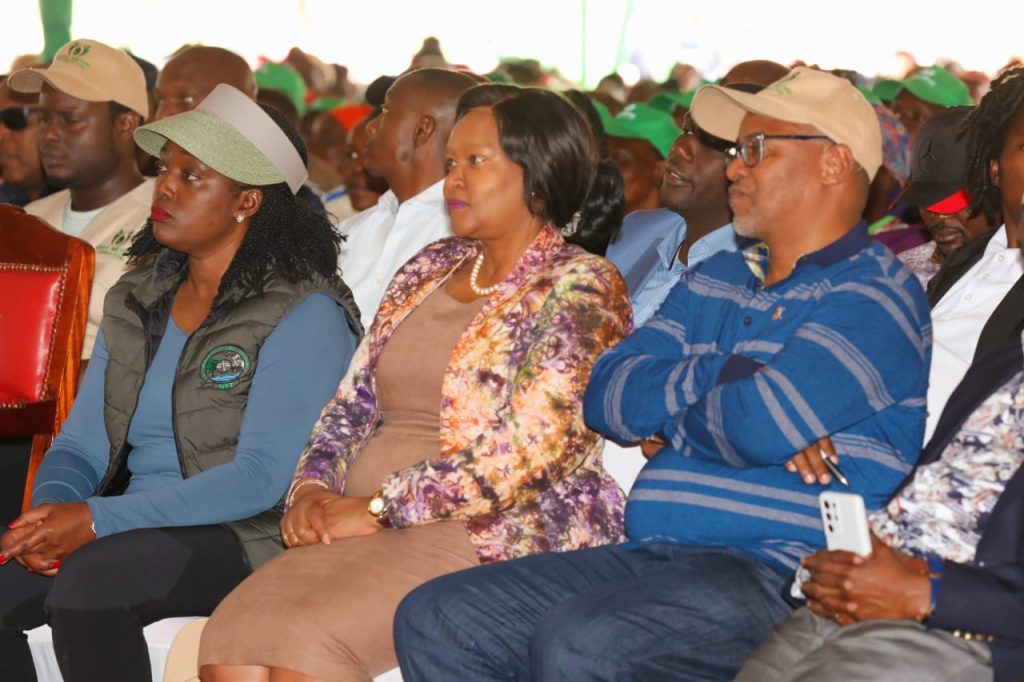
The Cabinet Secretary, accompanied by the Deputy President, Rigathi Gachagua, other Cabinet Secretaries, Forestry PS Ephantus Kimotho, and Nyandarua County leadership, revealed that the government has partnered with the Food and Agricultural Organization (FAO) to restore the degraded ecosystem of Lake Olbolosat.
“We have a partnership with FAO on the conservation of Lake Olbolosat. They’re providing Shs 5.5 million for lake restoration,” she said.
The sub-granted funds to community-based organizations will facilitate various restoration activities, including establishing a network of nurseries to produce indigenous tree seedlings, organizing community awareness and education programs on the importance of the lake, and working with communities to manage the lake’s water catchment areas.
The government’s commitment to restoring the lake is part of its efforts to conserve and sustainably manage the country’s natural resources.
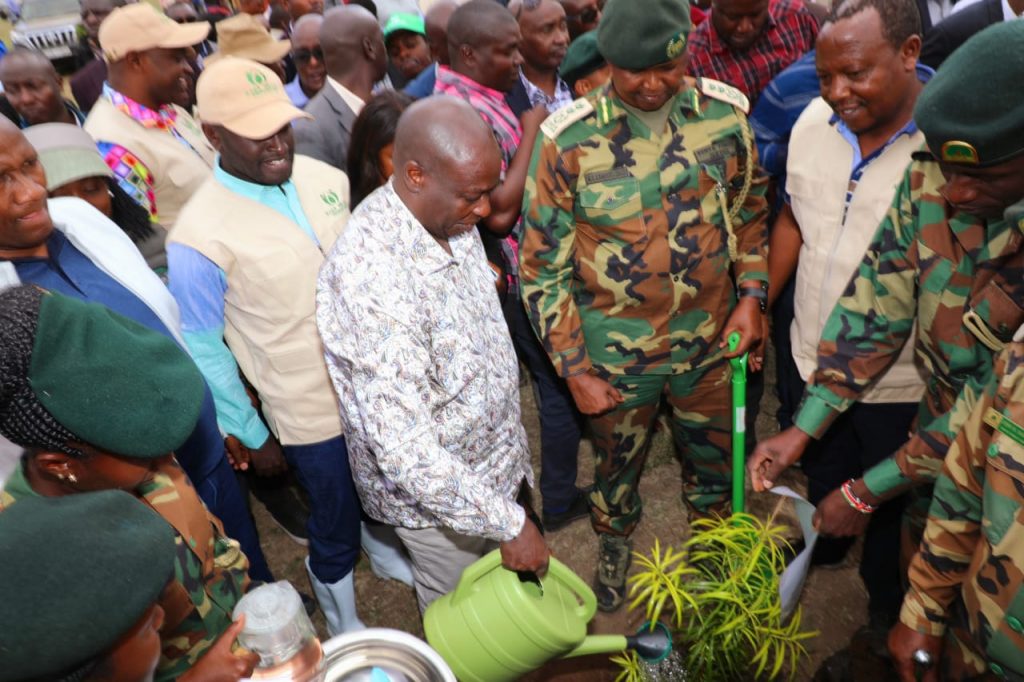
In his address, Deputy President Rigathi Gachagua called for concerted efforts by environmentalists to restore Kenya’s fragile and degraded ecosystems, including Lake Olbolosat. He urged Kenyans to take advantage of the ongoing long rains to plant trees and increase forest cover, a key strategy in mitigating climate change.
The restoration of the Lake Olbolosat ecosystem will not only provide water and livelihoods to communities but also safeguard the biodiversity of the Ewaso Nyiro River basin.
With the Kenyan Government’s commitment to conserving and sustainably managing natural resources, it is hoped that the restoration of Lake Olbolosat will set an example for other lakes and ecosystems across the country.

